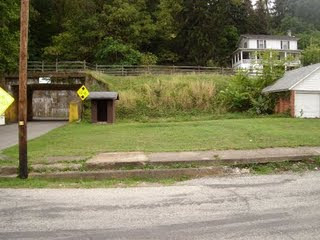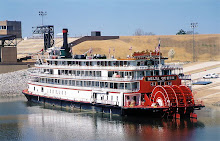 The East Bethlehem High School football team in 1927
The East Bethlehem High School football team in 1927
The miners' lot is hard indeed.
His family often are in need
The lack of work and sickness too,
are small to what he must go through.
Few of the public ever know
a miners' risk when he must go,
down in the mines to earn his bread,
with tons of loose rock overhead.
With dim lightof his safety lamp
he works in powder,smoke,and damp,
and wades around in mud and slime'
most breathe foul air till' quitting time
And then a roar a rumbling sound
That shakes the earth for miles around
and from the shaft the flames leap high
and men are left in there to die
The agony of these poor men
can not be described by pen
as maimed and dying they await
the help they know will come to late.
No loving voice to cheer them now
no soft cool hand upon their brow
no arms to hold them as they die
no one to say a last goodbye.
They think of men who lay in pain
a week or more but all in vain
they remember how the men were found
all cold and still way underground.
They think is this to be our fate
why must our suffering be so great
they fold their arms upon their breasts
and let starvation do the rest
Think of the mother of the wife
praying for this miners' life
as hour by hour they stand above
and wait for hope from one they love.
And children cry on mothers knees
bring back my papa will you please?
and strong men turn away in grief
for they can offer no relief.
I think a miners' work is such
that he can not be paid to much,
for work he must do underground
where light of day is never found.
John Phillip Wunder
May 25,1922

This is the first, second and third grade classes at Millsboro in 1923.

Curley Kensic had a bowling alley in Clarksville's Williamstown section. These early 1950's lady bowlers are from left to right :
Elizabeth Durdines, Dot Redman, Bonnie Conners, Clara Lamo, Dot Makel, Barbara Kolick, Ann Burke Kolick. Photo courtesy of Elizabeth Durdines Sevec

Reader Judith Watters Adamson writes me to kindly correct the newspaper caption:
"I'm the baby shown in the photo entitled "TINY TORNADO VICTIMS", my name is Judith Watters Adamson. I was 8 months old in that picture. I have an original newspaper with this photo. The newspaper is the Pittsburgh Sun-Telegraph and the date is June 25, 1944. The caption is incorrect and should read:
I delivered the Pittsburgh Press daily to the Y. A. Young machine shop. Carl Young was a Mail Pouch chewer. At about age 13 or 14 I asked him for a chew of tobacco. He gave it to me and I became deathly ill. I thank him now, because I have never touched tobacco after that lesson. My father purchased a 1929 Essex Coupe from the Sharpneck Motor Company in Rices Landing. The dealership was owned by Anson Sharpneck who walked on a artificial leg. He charged us kids 1 cent to pump up our bicycle tires. He operated the Hudson/Terraplane dealership until early 1943, at which time he sold the business to his chief mechanic, Joseph Clarchick. It then became Clarchick Motor Co. I remember financing Hudson cars at the Rices Landing Bank for Joe Clarchick. The Hudson name disappeared and at my last memory it he sold American Motors Cars under the brand of Nash/Rambler. My last time in Rices Landing was May 2005. At that time the building was still standing and used as a warehouse.
Growing up in Rices Landing I remember the steam boats, W. P. Snyder, Homestead, J. B. Fairless, Vulcan and many more. I now regret that I did not take photos of the old lock #5 and all of the steam boats that traveled the Mon. I was working just across the street in Rices Landing at the bank when the Monongahela Hotel was torn down.
On the Crucible Pa Miners Memorial, the Earl King and Earl J. King listed are my dad and I. My dad was very active in Crucible Local #4721 United Mine Workers of America. As a child I remember Jock Yablonski and William (Billy) Hynes at our house on union business many times. My grandfather, James Kelley, was killed in a slate fall in Crucible Mine 1927. My mothers brother Charles Kelley worked his entire lifetime at Clyde # 1 mine. He was a pumper at retirement.
This photo of Arthur White was taken at Clyde #1 in Fredericktown just minutes before his fatal accident
Arthur Earskin White was born in 1884 in or near Pittsburgh, the son of George H. and Helen "Ella" (Daugherty) White. He is one of a tragic many people to lose their lives in the coal, coke and steel workplace. As a young man Arthur labored on the railroad and as an electrician. Arthur married Roberta "Berdie" Estlick and by 1920, they lived at the Revere Coke Works near Uniontown, where he was a machinist in the coke plant. In 1930 the family was in Luzerne Township, Fayette County, with Arthur continuing his skill as a coal mine machinist. He played on and managed a baseball team in Hopwood.
Clinton V. Lewis was one of seven surviving veterans of the Civil War until his death at age 92 on Nov. 28, 1939. Lewis was born at Ruff Creek but spent most of his life in Lone Pine. He enlisted as a teenager in the 18th Pennsylvania Cavalry in March 1865, near war's end. This photo, from the Harbaugh collection, was taken in 1938 at the G.A.R. encampment in Washington Pa.
Dorthea Boyd Johnson and her ( now deceased ) brother Sheldon Boyd at the log Stull house at Clarksville in the early 1950's. Her mothers family lived in this house in the 1920's. The Stull family had property on both sides of the north fork of Ten Mile.
Photo courtesy of Dorthea Boyd Johnson






.jpg)
































































